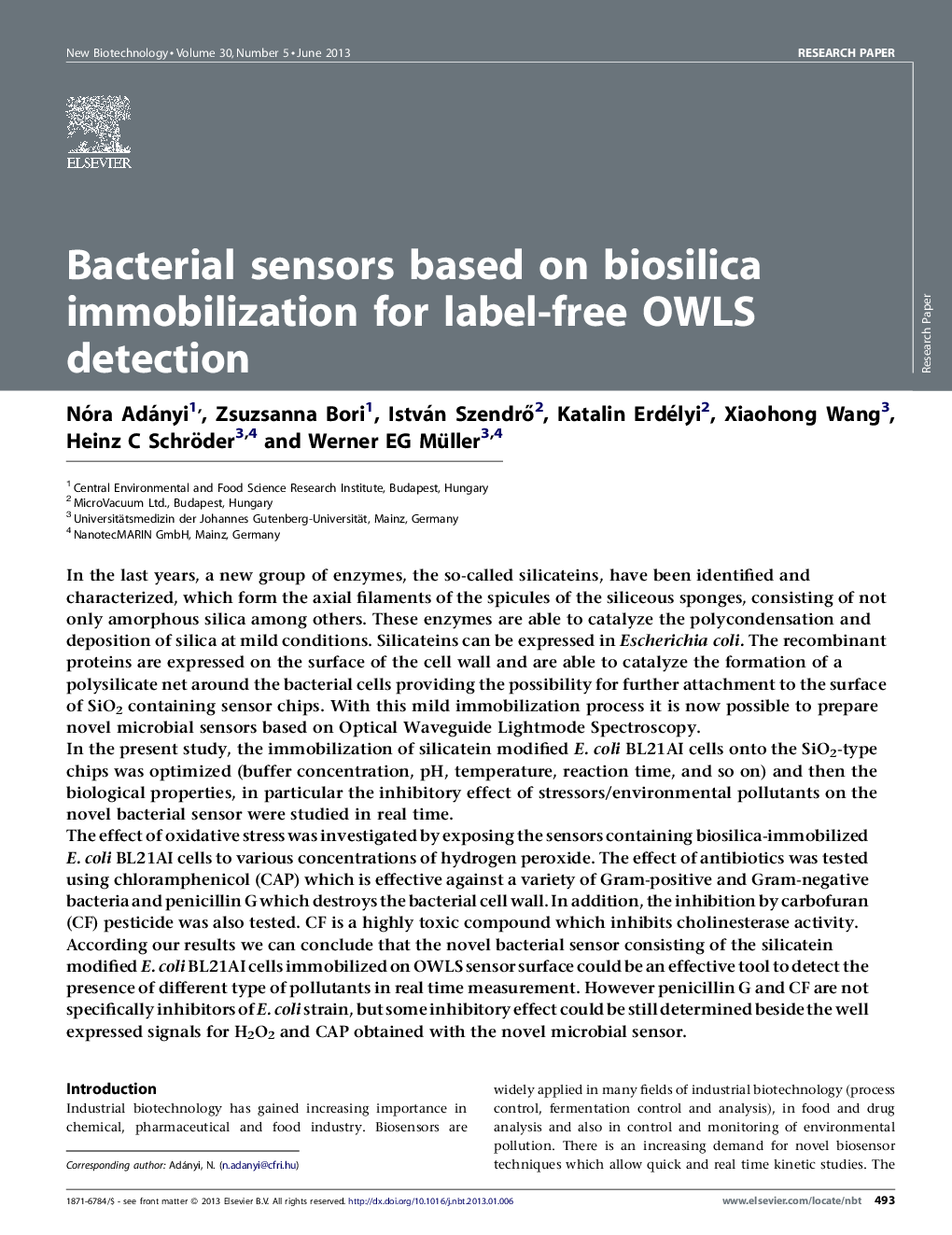| کد مقاله | کد نشریه | سال انتشار | مقاله انگلیسی | نسخه تمام متن |
|---|---|---|---|---|
| 33334 | 44971 | 2013 | 7 صفحه PDF | دانلود رایگان |

In the last years, a new group of enzymes, the so-called silicateins, have been identified and characterized, which form the axial filaments of the spicules of the siliceous sponges, consisting of not only amorphous silica among others. These enzymes are able to catalyze the polycondensation and deposition of silica at mild conditions. Silicateins can be expressed in Escherichia coli. The recombinant proteins are expressed on the surface of the cell wall and are able to catalyze the formation of a polysilicate net around the bacterial cells providing the possibility for further attachment to the surface of SiO2 containing sensor chips. With this mild immobilization process it is now possible to prepare novel microbial sensors based on Optical Waveguide Lightmode Spectroscopy.In the present study, the immobilization of silicatein modified E. coli BL21AI cells onto the SiO2-type chips was optimized (buffer concentration, pH, temperature, reaction time, and so on) and then the biological properties, in particular the inhibitory effect of stressors/environmental pollutants on the novel bacterial sensor were studied in real time.The effect of oxidative stress was investigated by exposing the sensors containing biosilica-immobilized E. coli BL21AI cells to various concentrations of hydrogen peroxide. The effect of antibiotics was tested using chloramphenicol (CAP) which is effective against a variety of Gram-positive and Gram-negative bacteria and penicillin G which destroys the bacterial cell wall. In addition, the inhibition by carbofuran (CF) pesticide was also tested. CF is a highly toxic compound which inhibits cholinesterase activity. According our results we can conclude that the novel bacterial sensor consisting of the silicatein modified E. coli BL21AI cells immobilized on OWLS sensor surface could be an effective tool to detect the presence of different type of pollutants in real time measurement. However penicillin G and CF are not specifically inhibitors of E. coli strain, but some inhibitory effect could be still determined beside the well expressed signals for H2O2 and CAP obtained with the novel microbial sensor.
► Mild immobilization process of silicatein modified E. coli BL21AI on SiO2 sensors.
► Silicatein-mediated biosilica formation on the sensor surface.
► Microbial sensor based on Optical Waveguide Lightmode Spectroscopy detection.
► Inhibition tests on E. coli sensor with chemical stressors.
► Effect of hydrogen peroxide, chloramphenicol, penicillin G, carbofuran was tested.
Journal: New Biotechnology - Volume 30, Issue 5, 25 June 2013, Pages 493–499